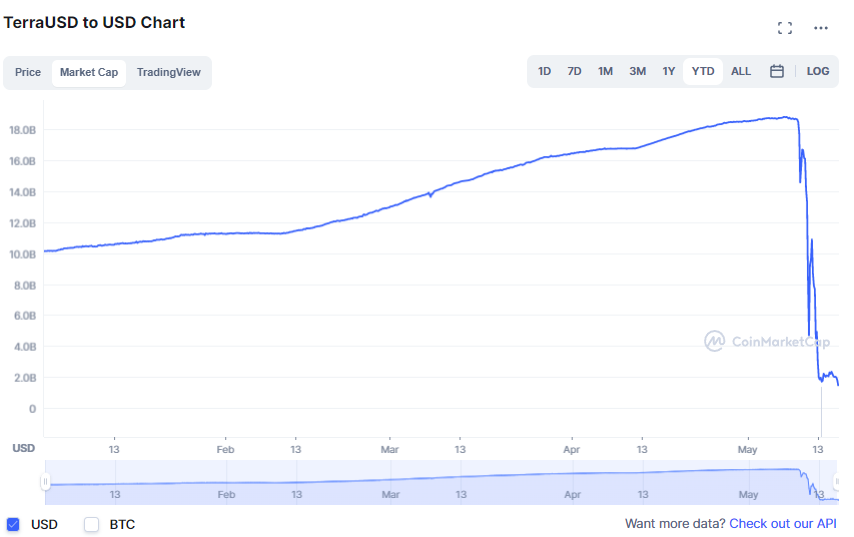Gm Fintech Architects —
Today, we do the long take in conversation format, uploaded above and with illustrated transcript as the article below.
Summary: We discuss the collapse of the Terra ecosystem and the destruction of the UST stablecoin. Of particular interest to us are (1) understanding what happened, (2) comparisons to bank structures and bank runs, as well as their systemic solutions, (3) comparisons to international macroeconomics and countries attempting to defend currency pegs, and established solutions. If Soros could break the Bank of England, why do we believe that private pegged currencies would be immune, especially with weaker reserves? We take this moment not to gloat or stare into the fire, but to learn.
Team: This note is in large part due to the work and support of the ConsenSys cryptoeconomics team, including David Shuttleworth, Ajay Mittal, and Ivan Bakrac. Join the Discord here.
Topics: macroeconomics, banking, crypto
Tags: Terra / Luna, UST, Bank of England, FDIC, Lehman Brothers
If you got value from this article, please share it. Long Takes are premium only, and we need your help to spread the word about how awesome they are!
Comment
The collapse of the Terra ecosystem, and the depegging and failure of its UST stablecoin, have caused a profound shock to the crypto markets over the last week or so. Over $50 billion of value was wiped out in these particular protocols. Much more has been wiped out as a secondary effect thereafter.
Now, we apologize if this is going to sound callous. This is not the intent. But, in some sense, this collapse is good. In what sense, you might ask? In the sense that the industry is “marking to market” things that have weakness, or dubious value. If some particular asset is a math equation with the equilibrium value of $0, and for whatever reason, it is trading at $40 billion, then the solution of that equation down to fundamentals is a relief.
There is much to flag about consumer protection, and soliciting investors, and whom to make whole. Already, correct progressive make-whole proposals are on the table.


But we are not here to make social policy in the anarchist world of capitalism. We are here to *understand* the moment and its history. You may find our first part on learning the right lessons from the collapse of Olympus DAO a useful starting point for this conversation. You may also find our analysis of Wirecard, Enron, and Lehman a useful counterpoint, to protect yourself from mistaking “crypto” for “human nature”.
Lastly, watch (1) how the transparency onchain of financial connectivity helps the market clear quickly to a new equilibrium (vs. the disaster of unwinding Lehman), and (2) how people behave in a moment of crisis, and which flags they choose to waive around. Ours is truth and understanding.
Discussion
Lex:
We are going to have a conversation about the fantastic $20 billion meltdown in crypto, from protocol to stablecoin to all sorts of fun, recursive confidence games. And I've got Ajay Mittal, David Shuttleworth, and Ivan Bakrac from the Cryptoecon team to open up some of these topics a little bit more.
So first off, let's just explain what is Luna? What is Terra? Why do they have these names? What is UST? Why is everything so embarrassing? David, let's go to you for just setting the stage for what happened.
















